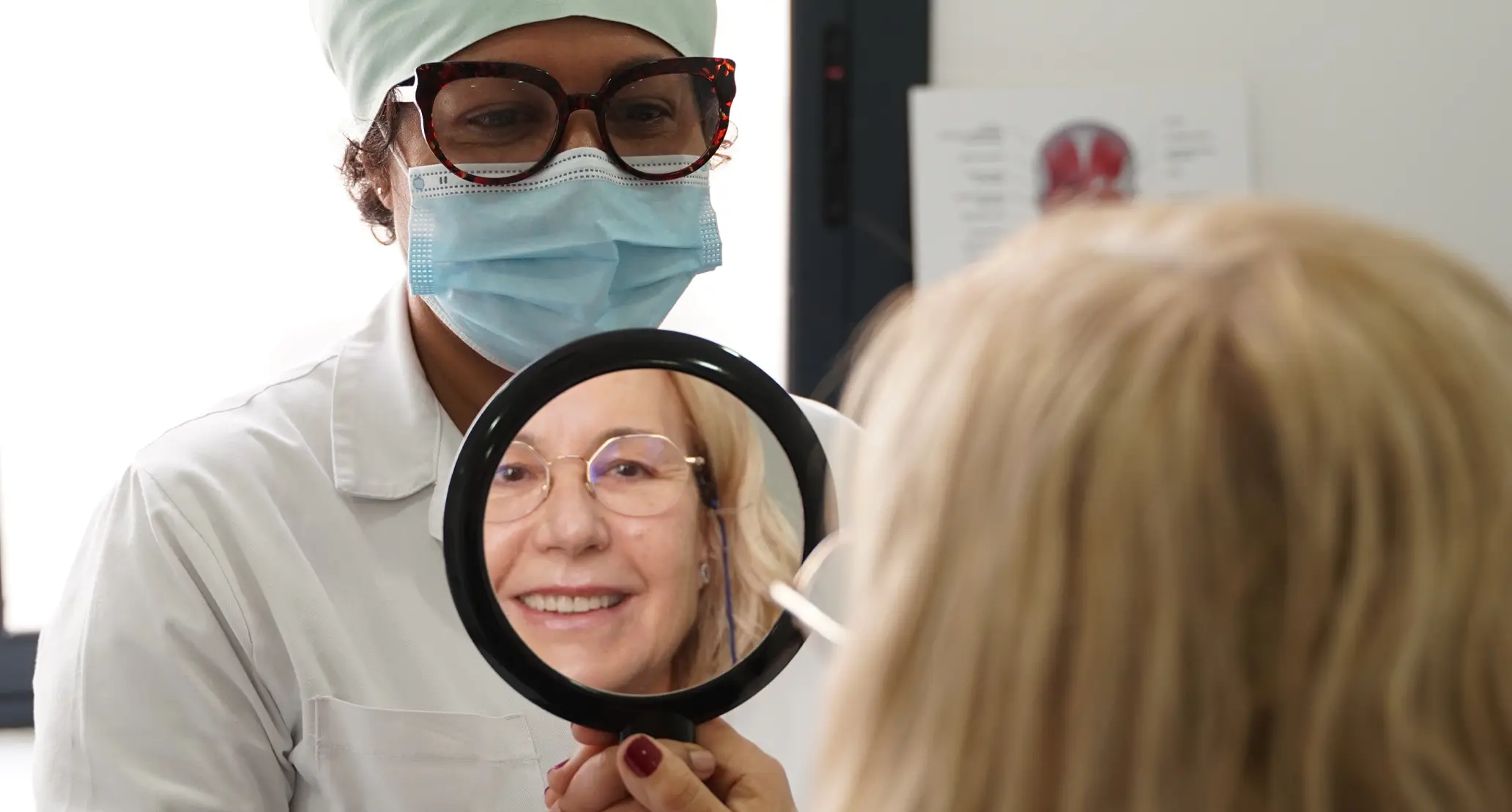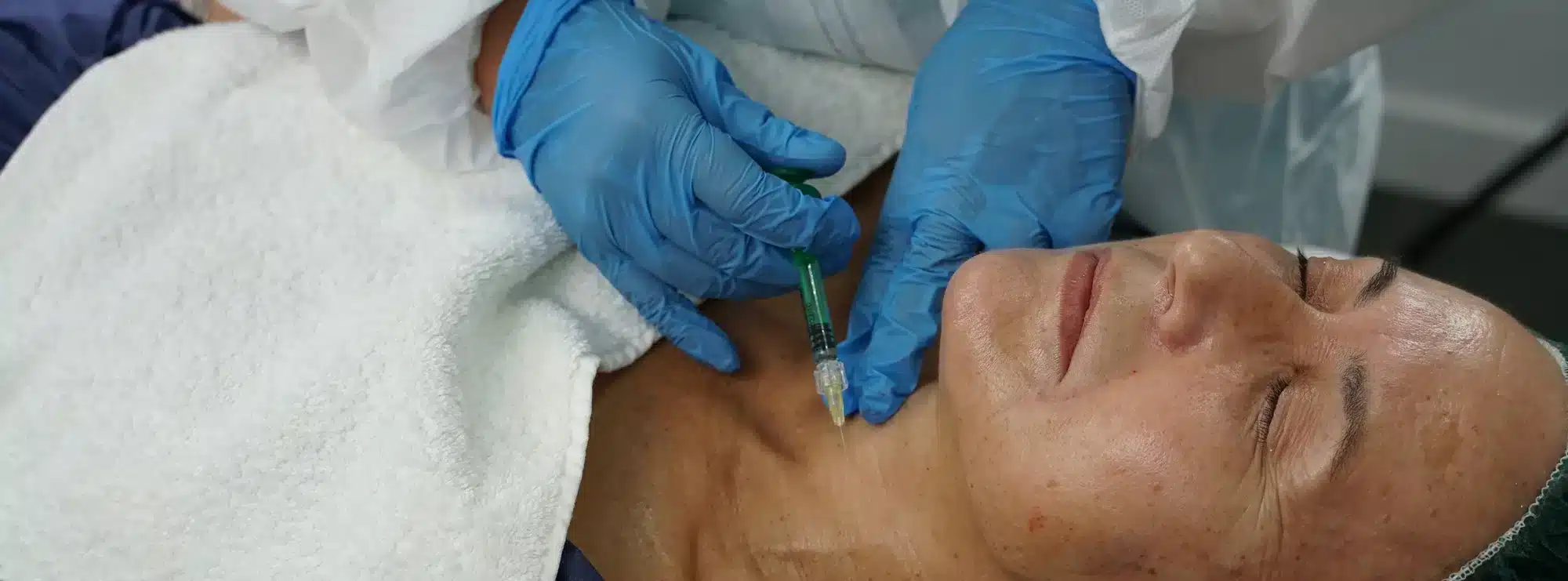
Reading time: 6 minutes
Article by Dr. Paula Pifarré
Over time, natural aging and environmental factors can have a significant negative impact on our skin. As we age, it is common for concerns such as loss of elasticity, the appearance of wrinkles, blemishes and dull skin texture to arise. This is due to an accumulation of damage to the skin, caused by the loss of stem cells, loss of efficiency in fibroblasts to generate collagen, in the degradation of collagen, but mostly in the triggering of inflammatory processes and in the accumulation of free radicals in the skin, very toxic and reactive.(1-2)
To address these problems, more and more people are turning to facial rejuvenation treatments. Among these, chemical peels and mesotherapy with peptide-containing compounds have gained popularity due to their promising results. In this article, we will explore the benefits and positive effects of these techniques.
Chemical peels are used to remove the upper layers of the skin, those that are composed of dead cells and often damaged by the effects of aging. This stimulates cell regeneration and promotes a more rejuvenated and luminous appearance of the skin. These treatments usually involve the application of a chemical solution to the skin, which can vary in strength and composition depending on individual needs.
Chemical peels can improve texture, eliminate blemishes and reduce the appearance of fine wrinkles. In addition, they can help improve the production of collagen and elastin, which are essential for skin firmness and elasticity (7).

Intermediate peeling to remove the superficial layers of the skin.
Facial mesotherapy is a procedure in which small amounts of substances, such as peptide compounds, are injected directly into the skin. Peptides are amino acid sequences that can play an important role in the stimulation of collagen and elastin, as well as in the repair and rejuvenation of the skin.
It should be noted that there are different types of peptides, some obtained by the hydrolysis of larger proteins, such as collagen, and others designed with biotechnology to act on a physiological target, triggering a sequence of beneficial events as is the case of CAP peptide 5 ®. (www.luxfaciemskinrenew.com; 3-4).
Mesotherapy with peptide-containing compounds can help smooth wrinkles, improve hydration and restore skin firmness. In addition, it can contribute to the reduction of inflammation and stimulate cell regeneration for a more youthful appearance (5’6).

Mesotherapy application.
The combination of chemical peels and mesotherapy with peptide-containing compounds can enhance the rejuvenating effects on the skin.
Chemical peels prepare the skin by removing dead cells, thus allowing better absorption of the compounds injected during mesotherapy. By stimulating cell regeneration and collagen production, this combination can help minimize wrinkles, firm the skin, reduce blemishes and improve overall texture.
In conclusion, the search for an effective and rejuvenating facial treatment has led to the popularity of chemical peels and mesotherapy with peptide-containing compounds. These techniques offer significant benefits individually, but when combined, a more complete and long-lasting facial rejuvenation can be achieved. These procedures can improve the appearance and texture of the skin, reduce wrinkles and blemishes, and promote a youthful appearance.
Bibliographic references
1-Pifarré,P. (2022) ISSN 2696-9084, Vol. 1. Issue 1. La piel Inmune.
2-Pintado-Berninches, L., Fernandez-Varas, B., et al. (2019). GSE4 peptide suppresses oxidative and telomere deficiencies in ataxia telangiectasia patient cells. Cell death and differentiation, 26(10), 1998–2014. https://doi.org/10.1038/s41418-018-0272-7
3-Iarriccio, L., Manguán-García, C., Pintado-Berninches, Let al. (2015). GSE4, a Small Dyskerin- and GSE24.2-Related Peptide, Induces Telomerase Activity, Cell Proliferation and Reduces DNA Damage, Oxidative Stress and Cell Senescence in Dyskerin Mutant Cells. PloS one, 10(11), e0142980. https://doi.org/10.1371/journal.pone.0142980
4-Pilkington, S. M., Bulfone-Paus, S., Griffiths, C. E. M., & Watson, R. E. B. (2021). Inflammaging and the Skin. The Journal of investigative dermatology, 141(4S), 1087–1095. https://doi.org/10.1016/j.jid.2020.11.006
5-Ho, C. Y., & Dreesen, O. (2021). Faces of cellular senescence in skin aging. Mechanisms of ageing and development, 198, 111525. https://doi.org/10.1016/j.mad.2021.111525
6-Draelos, Z. D., Kononov, T., & Fox, T. (2016). An Open Label Clinical Trial of a Peptide Treatment Serum and Supporting Regimen Designed to Improve the Appearance of Aging Facial Skin. Journal of drugs in dermatology : JDD, 15(9), 1100–1106.
7-Lee, J. C., Daniels, M. A., & Roth, M. Z. (2016). Mesotherapy, Microneedling, and Chemical Peels. Clinics in plastic surgery, 43(3), 583–595. https://doi.org/10.1016/j.cps.2016.03.004